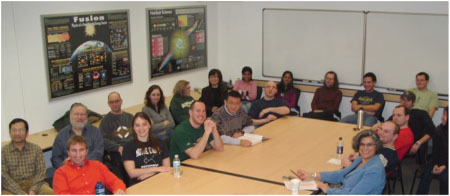
Leaders of industry, academics, and members of the national science academies are all concerned about the next generation of scientists and engineers to take on the challenges of the 21st century. One approach to addressing the upcoming shortages of scientists and engineers and to enhance our competitive edge in the flat globalization world is to increase the presence of under-represented minorities in the physical sciences.
The Institute for Structure and Nuclear AstroPhysics (ISNAP) at Notre Dame is one place where the face of physics is changing. The NSF-funded laboratory is home to a physics frontier center (JINA) at the interfaces of nuclear physics, astronomy, and astrophysics and the Nuclear Science Laboratory with a wide range of scientific foci from addressing open questions about the creation of the elements in the universe to using the applications of nuclear science to address questions from the origin of life to the time scale for a recent supernova in our cosmic neighborhood.
The ISNAP laboratory won a recent MRI award toward the construction and installation of a new 5 MV accelerator. This is a new development and the first such accelerator at a university for over 30 years. There are presently 27 graduate students from Notre Dame and 8 from other universities (US and abroad) studying toward Ph.D. degrees in the laboratory.
The most rewarding aspect of this is that 11 of the Notre Dame students and 2 of the outside graduate students are female totaling to 37% of the graduate population in the laboratory. This is easily twice the national average. The friendly atmosphere of the laboratory coupled with the new and exciting developments draw the very best students. They are working on understanding various aspects of stellar evolution, explosive nucleosynthesis, and developing new detectors and new detection techniques to address the challenges of the day.